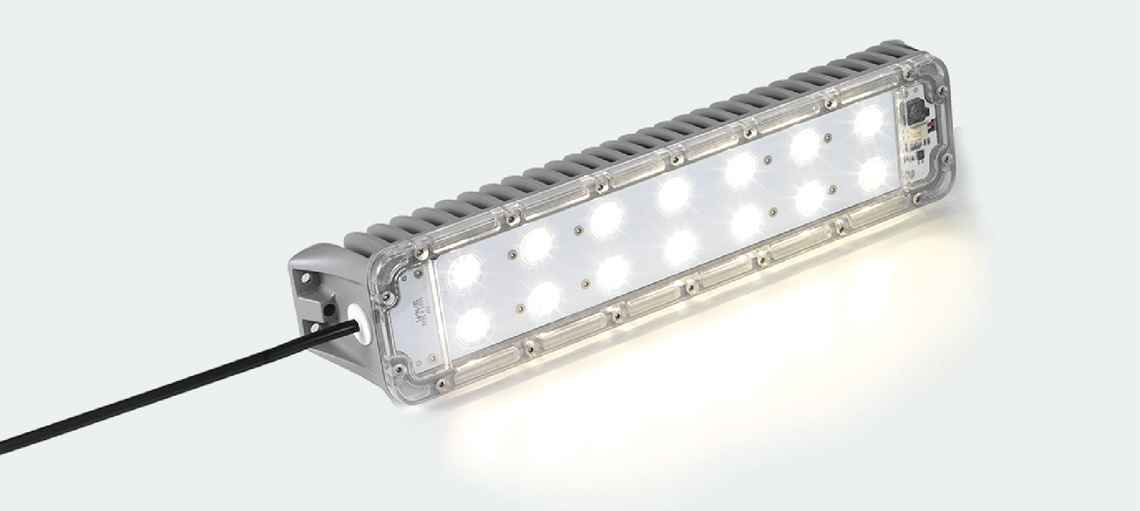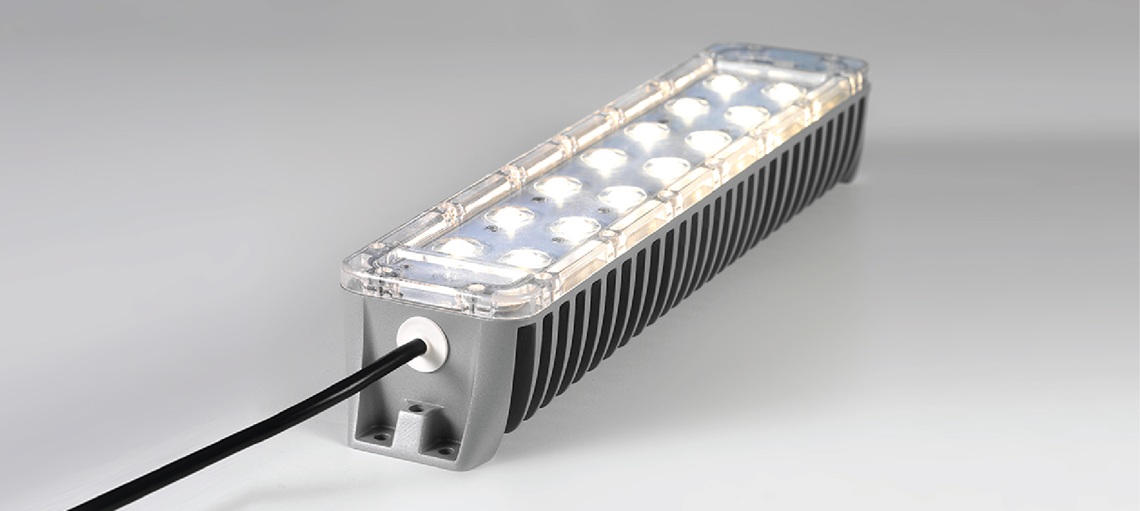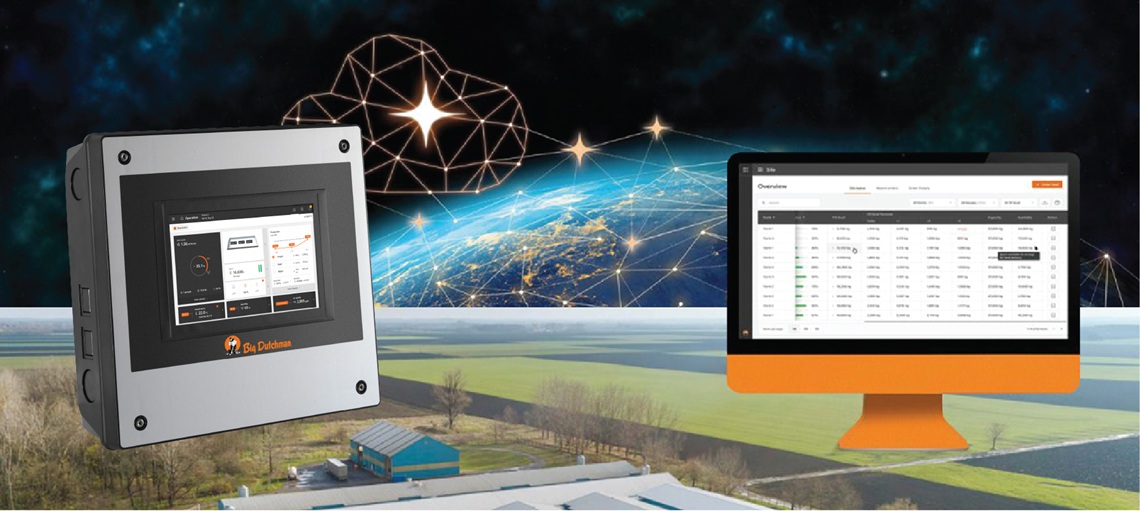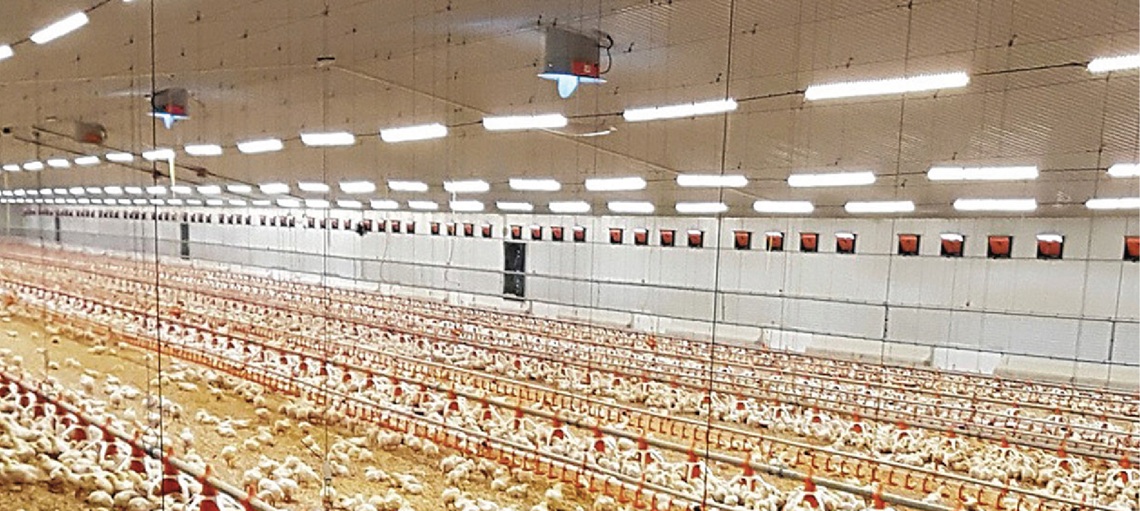The True Cost of Poor Lighting in Poultry Houses
In Southeast Asia's competitive poultry industry, where feed costs represent 60-70% of total production expenses, operational efficiency is of high importance. Yet one critical factor affecting both energy consumption and feed conversion ratio (FCR) often receives insufficient attention: lighting systems. Inefficient lighting practices contribute to both increased energy consumption and suboptimal bird performance across broiler operations.

Research indicates that lighting management plays a crucial role in broiler productivity and facility energy efficiency. This article explores how modern lighting solutions, particularly programmable LED systems like Big Dutchman's Helios LED series, can address these challenges through improved energy efficiency and optimized lighting strategies.
Why Lighting Matters More Than You Think
Lighting and the Modern Broiler's Physiology
Modern broilers are physiologically programmed to respond to specific light cues that regulate their feeding behaviour, activity levels, circadian rhythms, and stress responses. Light doesn't just help birds see their feed but fundamentally controls their metabolic processes and growth patterns.
Research published in Poultry Science demonstrates that light intensity, duration, and spectral quality directly influence:
- Feed intake patterns: Proper lighting can increase daily feed consumption by 8-12%
- Growth uniformity: Well-lit birds show 15% better flock uniformity
- Behavioural welfare: Appropriate lighting reduces aggressive pecking by up to 40%
- Immune response: Optimal photoperiods strengthen disease resistance
Improper lighting triggers stress responses that elevate cortisol levels, suppress appetite, and redirect energy from growth to survival mechanisms.
Lighting as an Energy Driver
In tropical climates like those across Southeast Asia, lighting systems account for 8-15% of total energy consumption in broiler operations, significantly higher than in temperate regions due to extended artificial lighting periods during shorter daylight hours.
The Food and Agriculture Organization (FAO) reports that inefficient lighting systems in livestock operations waste approximately 30-40% of their energy output through heat generation rather than useful illumination.
Energy Consumption Comparison by Lighting Type:
- Incandescent: 60-100 watts per fixture
- Compact Fluorescent (CFL): 23-26 watts per fixture
- T5 Fluorescent: 28-54 watts per fixture
- LED: 12-18 watts per fixture
Energy-efficient lighting systems represent a significant opportunity for facilities to improve their operational efficiency while maintaining optimal bird performance.
Understanding the Impact: How Poor Lighting Affects FCR Performance
The Feed Behaviour Connection
Feed conversion ratio, the amount of feed required to produce one kilogram of live weight, represents a critical performance metric in broiler production. Suboptimal lighting directly impacts FCR through multiple pathways.
Research from the Journal of Applied Poultry Research shows that light intensity below 5 lux suppresses feeding behaviour, while intensities above 40 lux can cause overstimulation and stress-related feed wastage. The optimal range of 20-30 lux during active periods maximizes voluntary feed intake while maintaining calm behaviour.
Impact of Lighting Intensity on FCR:
- Below 5 lux: FCR increases by 8-15 points
- 5-10 lux (rest periods): Optimal for digestion
- 20-30 lux (feeding periods): Peak feed efficiency
- Above 40 lux: FCR increases by 5-12 points due to stress
Spectral Quality and Growth Efficiency
The wavelength composition of lighting affects broiler physiology at the hormonal level. Cool white light (5000-6500K) stimulates activity and feeding, while warm light (2700-3000K) promotes calm behaviour and rest.

Studies indicate that adjustable spectrum lighting can improve FCR by 3-5 points compared to fixed-spectrum systems. Big Dutchman's Helios LED systems offer programmable spectral control, allowing producers to optimize light colour throughout the production cycle.
Common Lighting Mistakes That Cost Money
Inadequate Light Distribution
Uneven lighting creates dark zones where birds cluster, leading to poor air quality, increased mortality, and uneven growth. Areas receiving less than 50% of target illumination show 20-30% reduced feed conversion efficiency.
Poor Photoperiod Management
Many operations use continuous or arbitrary lighting schedules. Research shows that strategic light-dark cycles improve FCR by 8-12% compared to continuous lighting by allowing proper metabolic rest periods.
Using Outdated Technology
Facilities still operating incandescent or old fluorescent systems waste 40-60% more energy while providing inferior light quality. The heat output from these systems can raise house temperatures by 2-4°C.
Inadequate Fixture Maintenance
Dust accumulation on fixtures can reduce light output by 30-50% within months in poultry environments. Regular cleaning and proper IP-rated fixtures prevent this efficiency loss.
Lighting Control Systems
Advanced Dimming and Transition Protocols
Abrupt lighting changes cause significant stress responses in broilers. Smooth dimming protocols that simulate natural sunrise and sunset reduce stress hormones by up to 60%.
Optimal Transition Schedule:
- Dawn simulation: 30-minute gradual increase from 0 to target intensity
- Dusk simulation: 45-minute gradual decrease to rest lighting
- Mid-day dimming: Slight reduction during peak heat hours
Automated Control Integration

Modern lighting controllers integrate with comprehensive house management systems, ensuring consistent performance and reducing operator dependency. Systems like Big Dutchman's Viper Touch and BFN Fusion platforms provide:
- Automatic photoperiod adjustments
- Spectral programming capabilities
- Energy consumption monitoring
- Preventive maintenance alerts
- Remote monitoring and control
These integrated systems typically improve lighting consistency by 95% compared to manual control, supporting more predictable production performance.
Regional Considerations: Lighting in Tropical Climates
High humidity, temperature fluctuations, and dust exposure accelerate fixture degradation in tropical poultry environments. Standard lighting systems may lose 40-60% of their efficiency within 18 months without proper environmental protection.
Key considerations for tropical operations:
Humidity Protection: Fixtures must maintain IP65 or higher ratings to prevent moisture intrusion and premature failure.
Temperature Management: LED systems generate significantly less heat than traditional lighting, important for maintaining optimal house temperatures during hot seasons.
Dust Resistance: Sealed optics prevent dust accumulation that can reduce light output by 30-50% in just a few months.
Corrosion Resistance: Salt air in coastal regions requires specialized housing materials and coatings.
Big Dutchman Asia offers climate-optimized luminaires specifically engineered for tropical conditions, with extended service life warranties that account for regional environmental challenges.
Essential Lighting Parameters
| Parameter | Recommendation | Rationale |
| Feed Period Intensity | 20-30 lux | Maximizes voluntary intake |
| Rest Period Intensity | 5-10 lux | Allows metabolic recovery |
| Photoperiod Schedule | 18L:6D with transitions | Balances growth and welfare |
| Fixture Spacing | Uniform 1.5-2.0 uniformity ratio | Eliminates dark zones |
| Spectral Design | Adjustable 3000-5000K range | Optimizes hormonal responses |
| Control System | Automated dimming capability | Ensures consistency |
| Maintenance | Monthly cleaning, quarterly inspection | Maintains efficiency |
Technology Integration: The Future of Poultry Lighting
IoT and Data Analytics
Next-generation lighting systems incorporate sensors and analytics that provide insights into flock behaviour and performance:
Smart Sensors Monitor:
- Real-time light intensity and uniformity
- Bird activity patterns throughout the house
- Environmental conditions affecting lighting needs
- Predictive maintenance requirements
Data Analytics Provide:
- Correlation analysis between lighting parameters and FCR
- Optimization recommendations based on historical performance
- Energy usage patterns and optimization opportunities
- Automated adjustments based on weather and seasonal changes
Predictive Maintenance
Advanced lighting systems now include predictive maintenance capabilities that help prevent system failures:
- LED degradation monitoring and replacement scheduling
- Automated cleaning reminders based on dust accumulation sensors
- Performance trend analysis to identify optimization opportunities
- Integration with facility management systems for comprehensive oversight
Lighting represents a critical component in modern broiler operations that significantly impacts both energy efficiency and bird performance. The relationship between lighting quality and feed conversion efficiency, combined with energy consumption patterns, makes lighting system optimization an important consideration for poultry producers.
Modern LED lighting technologies offer substantial improvements in energy efficiency, controllability, and durability compared to traditional systems. Features like programmable spectral control, automated dimming, and integration with facility management systems provide producers with tools to optimize lighting conditions throughout the production cycle.
The technology exists today to substantially improve lighting efficiency and performance in poultry operations. With proper system design and implementation, modern lighting solutions can deliver measurable improvements in energy consumption while supporting optimal bird welfare and productivity.
For operations considering lighting system upgrades, Big Dutchman's comprehensive lighting portfolio offers proven technologies specifically designed for the demanding conditions of Asian poultry production environments.
Frequently Asked Questions
How does lighting affect feed conversion ratio?
Light intensity and duration directly regulate broiler feeding behaviour and metabolism. Optimal lighting (20-30 lux during feeding periods with proper photoperiods) can improve FCR by 3-8 points through increased voluntary feed intake and improved digestion efficiency. Poor lighting causes stress responses that redirect energy from growth to survival mechanisms.
What type of lighting is best for broiler houses in hot climates?
LED systems with adjustable spectrum and high IP ratings are ideal for tropical conditions. They generate minimal heat (reducing cooling loads), resist humidity and dust, and offer precise control over intensity and colour temperature. Systems like Big Dutchman's Helios LED series are specifically designed for demanding tropical environments.
How long does it take to recoup LED retrofit costs?
Payback periods vary based on operation size, local energy costs, and existing system efficiency. Most operations see positive returns through energy savings and improved bird performance, though specific timelines depend on individual facility conditions and management practices.
What lighting intensity is best for different broiler growth stages?
- Week 1-2: 30-40 lux to encourage early feed intake
- Week 3-5: 20-30 lux for optimal growth
- Week 6+: 15-25 lux to reduce pre-harvest stress Rest periods should maintain 5-10 lux throughout all stages.
How often should poultry house lighting be maintained?
Monthly cleaning of fixtures and quarterly comprehensive inspections maintain optimal performance. Smart systems with predictive maintenance can extend these intervals by providing real-time performance monitoring and automated alerts.
References
- Olanrewaju, H.A., et al. (2006). "A Review of Lighting Programs for Broiler Production." Poultry Science, 85(4), 720-727. https://www.researchgate.net/publication/26557849_A_Review_of_Lighting_Programs_for_Broiler_Production
- Food and Agriculture Organization (2012). "Energy-Smart Food for People and Climate: Issue Paper." FAO Publications. https://www.fao.org/3/i2454e/i2454e.pdf
- Olanrewaju, H.A., et al. (2016). "Effects of light sources and intensity on broilers grown to heavy weights." Poultry Science, 95(5), 1042-1051. https://pubmed.ncbi.nlm.nih.gov/26908888/
- USDA Agricultural Research Service (2016). "Lighting is Key in Poultry Health." ARS Online Magazine. https://agresearchmag.ars.usda.gov/2016/may/poultry/
- Pan, J., et al. (2023). "Effects of a variable light intensity lighting program on the welfare and performance of commercial broiler chickens." Frontiers in Physiology, 14, 1059055.
https://www.frontiersin.org/journals/physiology/articles/10.3389/fphys.2023.1059055/full - Olanrewaju, H.A., et al. (2018). "Effect of light intensity adjusted for species-specific spectral sensitivity on blood physiological variables of male broiler chickens." Poultry Science, 98(2), 798-816.
https://pubmed.ncbi.nlm.nih.gov/30307576/ - Olanrewaju, H.A., et al. (2015). "Effects of color temperatures (Kelvin) of LED bulbs on blood physiological variables of broilers grown to heavy weights." Poultry Science, 94(7), 1721-1728.
https://pubmed.ncbi.nlm.nih.gov/26047670/ - Deep, A., et al. (2020). "Evaluation of light colour manipulation on physiological response and growth performance of broiler chickens." Tropical Animal Health and Production, 53(1), 40.
https://link.springer.com/article/10.1007/s11250-020-02432-1 - FAO Energy Programme (2024). "Energy-Smart Food Systems." Food and Agriculture Organization.
https://www.fao.org/energy/home/en/ - Batista, J.G.S., et al. (2022). "Lighting, density, and dietary strategies to improve poultry behavior, health, and production." Journal of Animal Behaviour and Biometeorology, 10(1), 2212.
https://www.jabbnet.com/article/doi/10.31893/jabb.22012
Disclaimer:
This article is based on publicly available research and industry publications and is intended as a general guide for poultry producers. While every effort has been made to ensure accuracy, the information provided should not replace professional veterinary advice or site-specific consultations. Production outcomes may vary based on local conditions, management practices, bird genetics, and other factors.


